Table of Contents
ToggleIn a world where technology evolves faster than a cat meme goes viral, cloud computing stands out as the superhero of the digital age. It’s not just about storing files anymore; it’s about revolutionizing how businesses operate. With trends shifting like a chameleon on a rainbow, staying updated can feel like trying to catch smoke with your bare hands.
Overview of Cloud Computing Trends
Cloud computing trends continuously reshape the technological landscape. Increased adoption of hybrid cloud solutions enhances flexibility and scalability for businesses. Companies are integrating public and private clouds to optimize resources and improve operational efficiency.
Artificial intelligence and machine learning integration with cloud services gains momentum. Businesses leverage these technologies to analyze large datasets, automate processes, and derive insights. By incorporating AI, companies enhance decision-making and customer experiences.
Serverless computing emerges as a popular trend. Developers focus on writing code without managing server infrastructure, leading to reduced costs and simplified deployment. This approach allows teams to concentrate on application logic, improving productivity.
Security remains a top priority within cloud environments. Organizations invest in advanced security measures such as zero trust architecture and encryption. By enhancing security protocols, they mitigate risks and protect sensitive data.
Sustainability also influences cloud computing trends. Many providers commit to using renewable energy sources to power data centers. This shift not only addresses environmental concerns but also appeals to environmentally conscious consumers.
Finally, edge computing gains traction as businesses look to process data closer to the source. This method reduces latency and improves performance for applications in real-time. By adopting edge computing, organizations can respond swiftly to changing conditions and deliver a better user experience.
Emerging Technologies in Cloud Computing

Cloud computing continuously evolves with innovative technologies shaping its future.
Artificial Intelligence Integration
Artificial intelligence (AI) significantly enhances cloud computing capabilities. Businesses leverage AI to improve data analysis and automate routine tasks. Companies gain insights from vast datasets, driving better informed decisions. With machine learning algorithms, cloud services refine processes over time, boosting efficiency. The combination of AI and cloud computing is particularly beneficial for customer service, resulting in personalized experiences. As AI solutions become more integrated, operational costs decrease while performance increases, allowing organizations to remain competitive.
Serverless Computing
Serverless computing transforms how developers build and deploy applications. By abstracting server management, this model allows teams to focus on coding instead of infrastructure. Cost savings arise, as organizations pay only for actual usage rather than pre-provisioned resources. The scalability of serverless platforms also supports rapid growth, handling varying workloads with ease. Adopting this approach accelerates time-to-market for new products, enhancing agility. Many businesses find serverless computing aligns well with agile methodologies, fostering innovation and speed in development cycles.
Changes in Cloud Adoption Patterns
Organizations increasingly adopt diverse strategies to optimize their cloud computing solutions. Two key trends are hybrid cloud solutions and multi-cloud strategies, each addressing specific business needs.
Hybrid Cloud Solutions
Hybrid cloud solutions allow businesses to combine public and private cloud resources. This blend enhances flexibility and scalability, catering to varying data management demands. Companies can maintain sensitive data on private clouds while utilizing public clouds for less critical operations. As a result, organizations gain optimal performance and resource allocation, meeting diverse regulatory requirements. This approach also supports seamless workload migration and effective disaster recovery strategies. Many enterprises report improved operational efficiency by leveraging these hybrid environments.
Multi-Cloud Strategies
Multi-cloud strategies involve organizations using multiple cloud services from different providers. This approach fosters avoidance of vendor lock-in and promotes resilience through diversification. Companies can select the best tools from various providers, enhancing overall functionality. By distributing workloads across different platforms, businesses achieve better reliability and performance. Utilizing multiple clouds also allows firms to address specific compliance and cost-reduction strategies. Surveys indicate an increase in organizations pursuing multi-cloud strategies as they seek to optimize costs and enhance service delivery.
Security Trends in Cloud Computing
Security remains a critical focus in cloud computing. Organizations invest heavily in advanced strategies to safeguard sensitive information.
Enhanced Data Protection
Enhanced data protection measures adapt to the evolving threat landscape. Organizations increasingly implement zero trust architectures, where verification occurs at every access point. Encryption technologies also play a pivotal role in securing data both in transit and at rest. Additionally, businesses utilize multi-factor authentication to strengthen user access controls. With these strategies, companies can significantly reduce the risk of data breaches and build trust with clients.
Compliance Challenges
Compliance challenges in cloud computing grow as regulations evolve. Organizations must navigate frameworks like GDPR, HIPAA, and CCPA while ensuring data policies align with legal requirements. Non-compliance could lead to hefty fines and damage to reputation. Managing data residency and processing requirements adds complexity to cloud strategies. Continuous monitoring and audits represent effective measures for maintaining compliance. Leveraging cloud service providers with built-in compliance features helps simplify this process.
The landscape of cloud computing is evolving rapidly and businesses must stay ahead of the curve. Embracing hybrid and multi-cloud strategies not only enhances flexibility but also mitigates risks associated with vendor lock-in.
As organizations increasingly integrate AI and machine learning, they unlock powerful insights that drive efficiency and improve customer experiences. The rise of serverless computing further streamlines development processes, allowing teams to innovate without the burden of infrastructure management.
Security and sustainability remain critical focal points as companies navigate compliance and environmental responsibilities. By adapting to these trends, businesses can position themselves for success in a competitive digital world.




